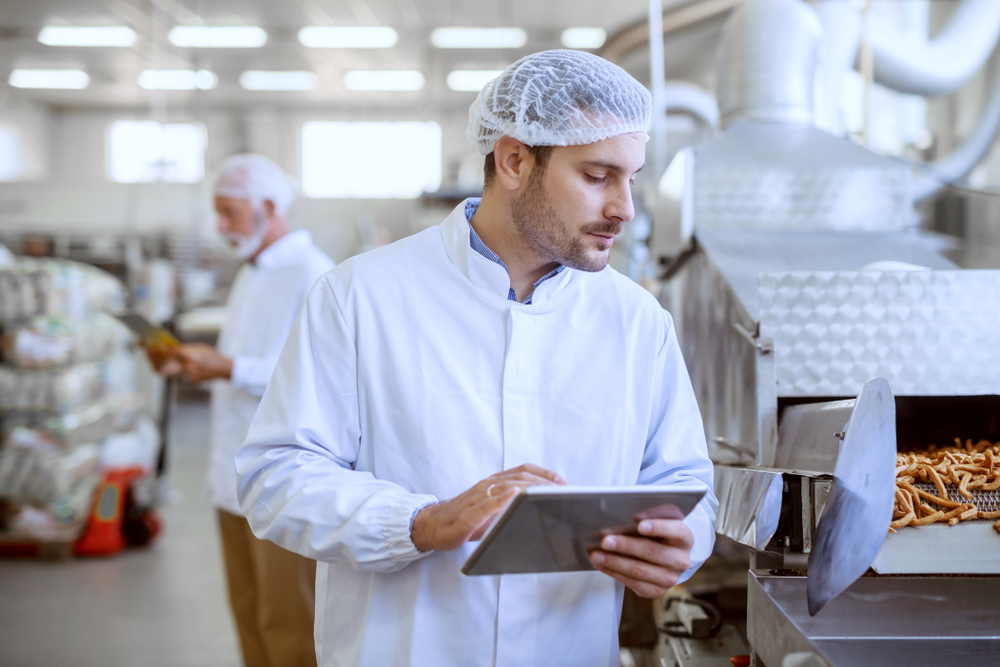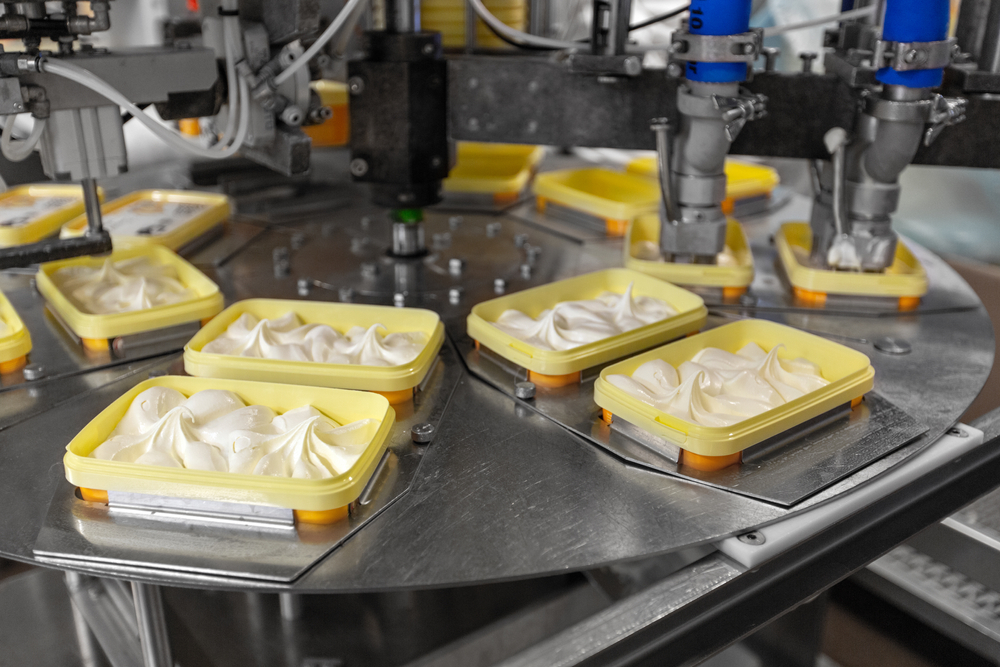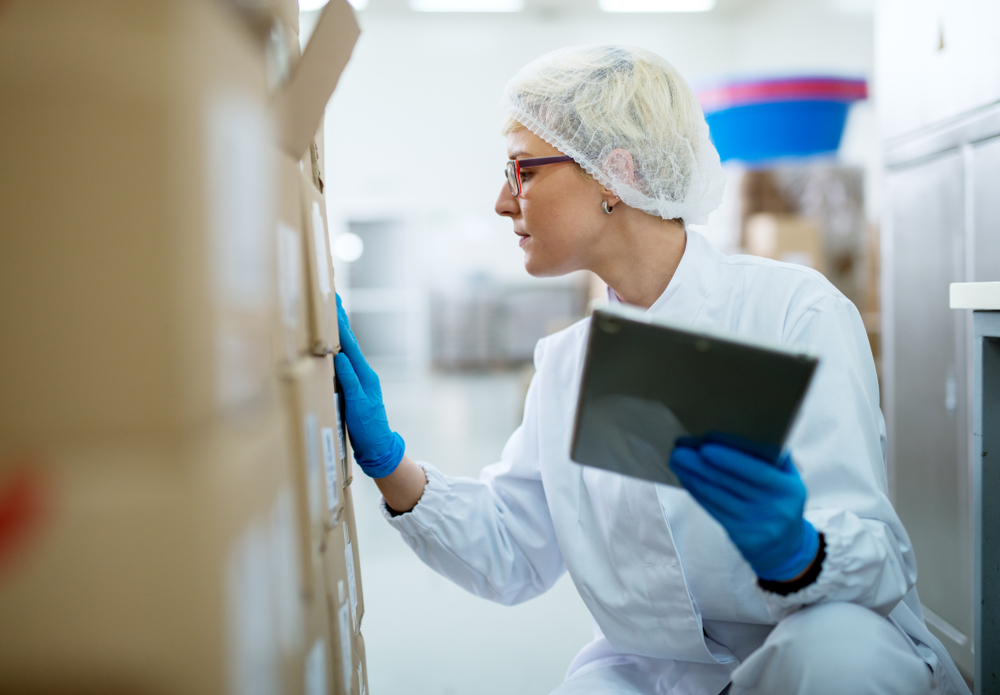For food manufacturers, ensuring food security means consistently producing safe, high-quality products that meet regulatory standards while maintaining efficiency.
This requires implementing structured procedures, adhering to recognised safety certifications, and investing in the right equipment. By focusing on key operational practices, food manufacturers can safeguard the integrity of their products and the security of their food supply chain.
Implementing a Hazard Analysis and Critical Control Points (HACCP) Plan
A critical component of achieving food security is having a robust Hazard Analysis and Critical Control Points (HACCP) plan in place. HACCP is a systematic approach that identifies potential hazards in the production process and establishes control measures to mitigate them.
It covers biological, chemical, and physical hazards, ensuring that any risks to food safety are identified and addressed before they reach the consumer.
By implementing a well-structured HACCP plan, food manufacturers can:
– Proactively prevent contamination at critical stages of production.
– Improve process control, ensuring consistent product safety.
– Meet the legal requirements for food safety standards.
HACCP plans are not static and should be regularly reviewed and updated to adapt to any changes in production, new ingredients, or updated regulatory requirements.

Achieving food safety certifications (BRC, SALSA)
Food manufacturers seeking to ensure food security should aim to achieve globally recognised certifications, such as BRC (British Retail Consortium Global Standards) and SALSA (Safe and Local Supplier Approval).
These certifications demonstrate a company’s commitment to maintaining high safety standards and following best practices.
BRC certification is internationally recognised and encompasses a range of safety and quality criteria, including:
– Senior management commitment.
– Hazard and risk management (through HACCP).
– Hygiene and facility standards.
– Product and process controls.
SALSA, while more UK-centric, focuses on smaller food businesses and offers guidance for maintaining safe food production processes. It helps smaller manufacturers meet the same safety standards as larger companies and can open doors to working with retailers who require rigorous standards.
Achieving these certifications not only builds trust with clients and retailers but also strengthens internal operations by ensuring that systems are in place to consistently deliver safe products.
Meeting regulatory requirements for food security
Compliance with national and international food safety regulations is essential for food manufacturers. The Food Standards Agency (FSA) in the UK, for example, sets strict regulations that govern hygiene practices, allergen management, labelling, and more.
Key regulations food manufacturers should focus on include:
– Food Safety Act 1990: Ensures all food produced is safe for consumption and accurately labelled.
– Regulation (EC) No 178/2002: Establishes procedures for food safety across the EU, particularly focusing on traceability and rapid withdrawal of unsafe products.
– Food hygiene regulations: Sets requirements for cleanliness, pest control, and food handling to prevent contamination.
Regular audits and inspections by regulatory authorities help ensure compliance and identify areas for improvement. Maintaining up-to-date records of all processes and corrective actions is essential to demonstrate compliance during inspections and audits.

Investing in the right equipment and facilities
The right equipment plays a vital role in ensuring food security during the manufacturing process. Investments in advanced food processing and packaging equipment not only improve efficiency but also reduce the risk of contamination and spoilage.
For instance, temperature control systems in both processing and storage environments help maintain the quality and safety of perishable products.
Key areas for investment include:
– Hygienic design: Equipment designed with food safety in mind, reducing areas where bacteria can harbour.
– Temperature monitoring systems: Ensures products are stored and transported at safe temperatures, preventing spoilage.
– Automated Cleaning Systems (CIP): Helps maintain hygiene standards by automatically cleaning equipment between production runs.
Manufacturers should also implement maintenance schedules to ensure that all equipment is functioning correctly and any risks of malfunction (which could compromise food safety) are minimised.

Record keeping and traceability
Effective record keeping is essential to ensure food security and demonstrate compliance with regulatory standards.
Detailed records should be kept for every stage of the production process, from sourcing raw materials to the finished product reaching the market. This includes:
– Ingredient sourcing and supplier certifications.
– Production processes and any deviations or corrective actions.
– Cleaning and maintenance logs.
– Records of product testing and quality control.
Good traceability systems allow manufacturers to track ingredients and products through the supply chain, helping to quickly identify and address issues such as contamination or allergen mislabelling.
In the event of a product recall, these records are invaluable in ensuring that the right products are identified and removed from circulation quickly and efficiently.
For food manufacturers, ensuring food security goes beyond just producing enough food; it involves consistently delivering safe, high-quality products that comply with all relevant regulations and certifications.
By implementing structured safety procedures such as HACCP, achieving certifications like BRC or SALSA, complying with legal standards, and investing in the right equipment, manufacturers can safeguard the integrity of their products and maintain food security throughout the supply chain.

